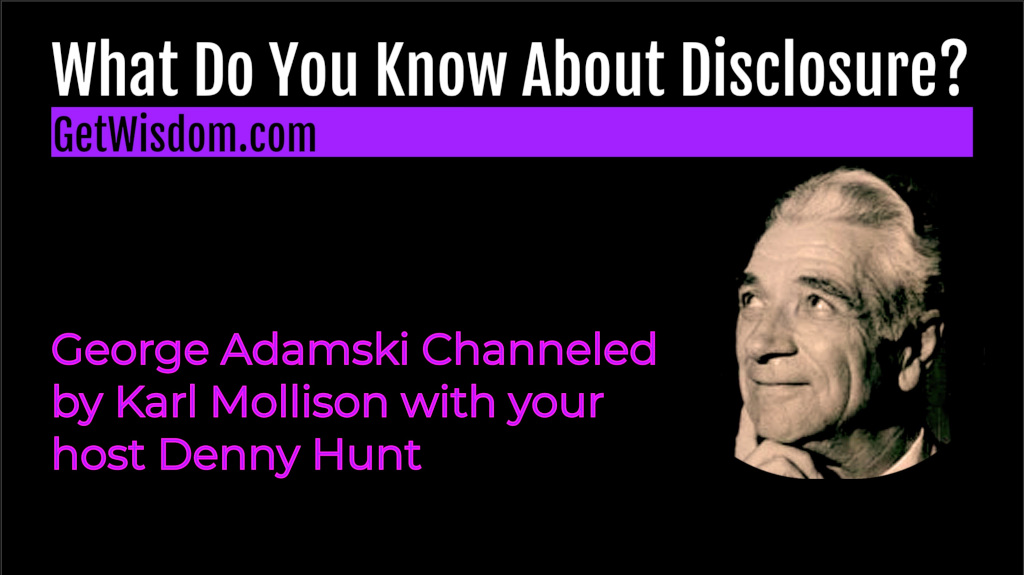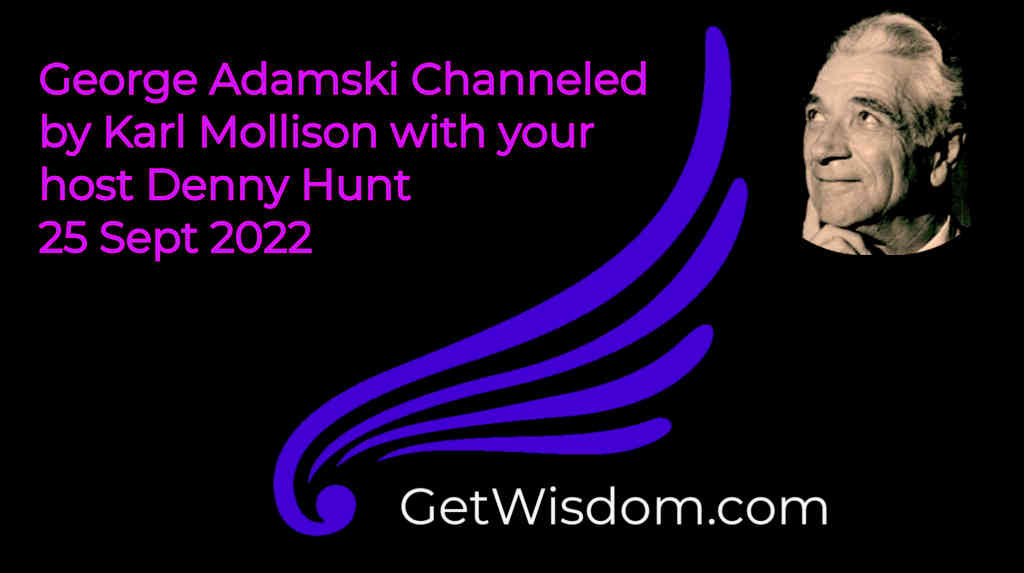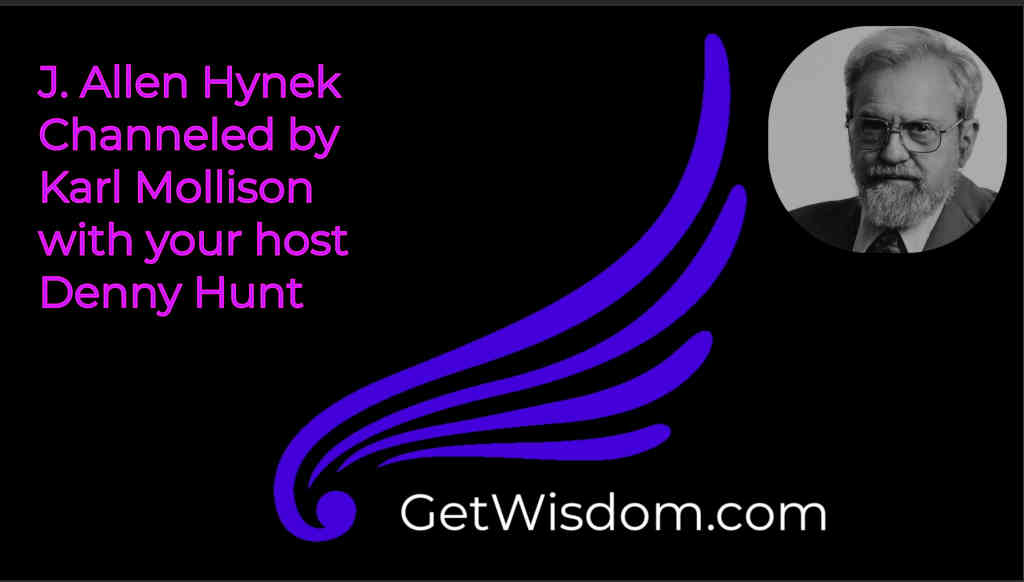
Karl Mollison channels George Adamski
To see the rest of this video, go to https://www.getwisdom.com/george-adamski-channeled-by-karl-mollison-25sept2022/
From https://en.wikipedia.org/wiki/George_Adamskirom https://en.wikipedia.org/wiki/George_Adamski
George Adamski 17 April 1891 – 23 April 1965 was a Polish-American author who became widely known in ufology circles, and to some degree in popular culture, after he displayed numerous photographs in the 1940s and 1950s that he said were of alien spacecraft, claimed to have met with friendly Nordic alien Space Brothers, and claimed to have taken flights with them to the Moon and other planets.
Adamski was the first, and most famous, of several so-called UFO contactees who came to prominence during the 1950s. Adamski called himself a “philosopher, teacher, student and saucer researcher”, although most investigators concluded his claims were an elaborate hoax, and that Adamski himself was a charlatan and a con artist.
Adamski authored three books describing his meetings with Nordic aliens and his travels with them aboard their spaceships: Flying Saucers Have Landed (co-written with Desmond Leslie) in 1953, Inside the Space Ships in 1955, and Flying Saucers Farewell in 1961.
The first two books were both bestsellers; by 1960 they had sold a combined 200,000 copies.
In addition to his contributions to ufology in the United States, Adamski’s work became very popular in Japan and helped inspire many depictions of aliens and UFOs in postwar Japanese culture and media.
See https://www.the-adamski-case.nl/his-mission/global-reach/


